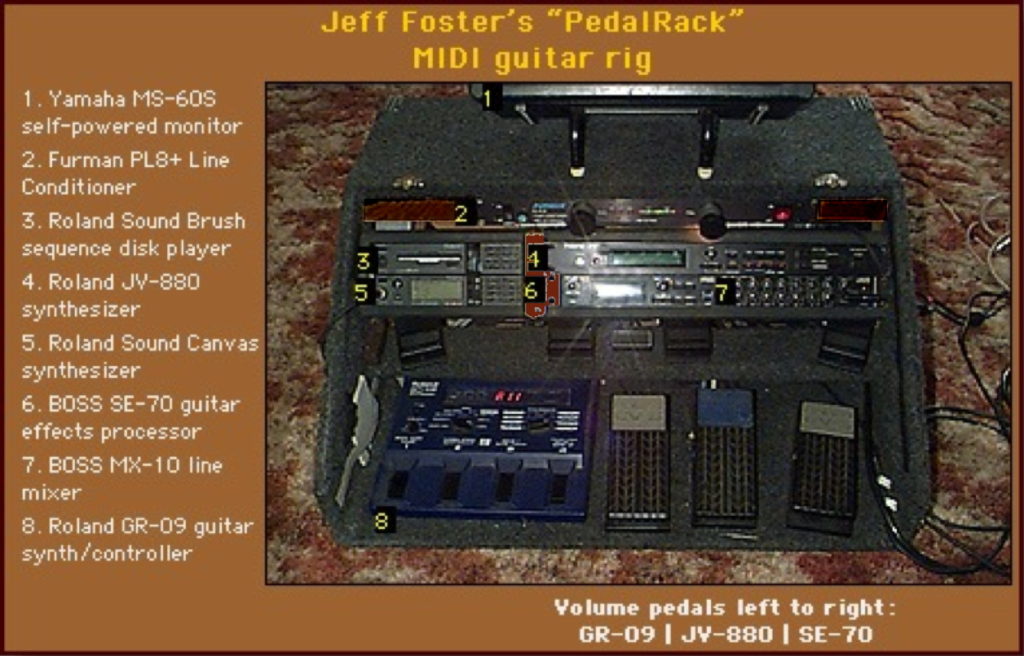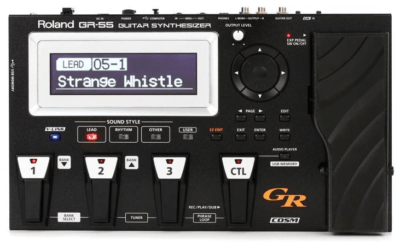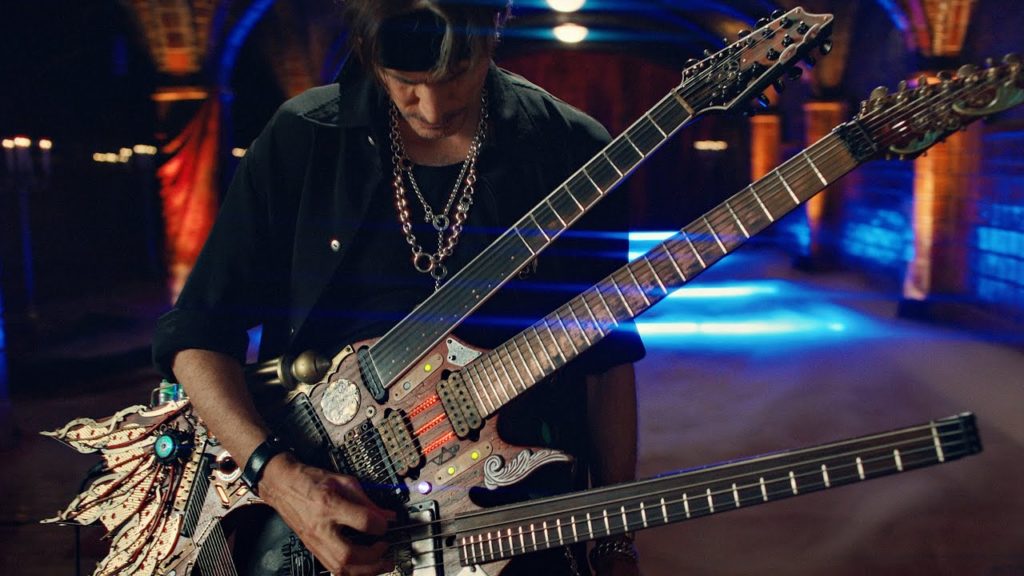When it comes to my stage gear (and not having the luxury of a roadie), I’m a big fan of ergonomics. I strive to make my rig as efficient and easy to move and setup as possible. So yeah, I’ve had dozens of racks and pedalboards, and they seem to always be evolving. I’ve also built my share of custom pedalboards when I couldn’t find the particular combination of features I was looking for in the music store catalogs. Thankfully, with gear getting smaller, lighter and more powerful all the time, my quest for killer ergonomics has become easier to satisfy.
While living in California during the 90s, when my guitar-synth obsession was in full bloom, I designed and built several custom pedalboard/rack enclosures. My craziest build was the 4-level “PedalRack” I designed to transport the extended MIDI guitar-synth rig I was using at the time.
The idea was to enclose various rack-mounted sound modules, guitar effects and a mixer, along with my floor units, into one streamlined gig rig, with everything completely hard-wired and hard-cased for the road.
This was way back before cell phones were also cameras, so sadly this is the only picture I have of the beast:

Top to bottom: Altogether, my pedalrack housed seven electronic components. Powering everything, on the top level I had a Furman PL8+ line conditioner with lighting.
Below that I built an angled “1.5x2U” rack unit holding a Roland Sound Canvas MIDI’d to a Roland Sound Brush sequence disc-drive/player. To the right of the sequencer array was a Roland JV-880 slaved to a Roland GR-09, a Roland SE-70 multi-effects guitar processor, and a Roland MX-10 line mixer that mixed everything to stereo outputs mounted on the right side of the pedalrack. I had a couple of inches to spare, so I added a switchable guitar input jack in case I ever wanted to plug a standard guitar into the SE-70 guitar processor, bypassing all the MIDI stuff. I recall using that feature a few times.
Beneath the rack was a slanted foot switch platform. In the middle there were two foot switches for controlling the Sound Brush (plus a small digital clock), and toward the outside were two more foot switches that controlled an external Alesis SR-16 drum machine.
On the main deck was the velcro-mounted Roland GR-09 guitar synth, and to mix my sound on the fly I mounted three volume pedals connected to the GR, the JV, and the SE. A self-powered Yamaha MS-60s personal monitor rested on top. All cabling was firmly secured in the bowels of the unit.
I built this monster out of 1/2″ plywood with square 3/4″ pine bracing, and carpeted with standard amp cover material, including an angled lid that latched onto the thing for transport. The entire unit rolled on four rubber wheels mounted on the back side.
I could roll it onstage, lay it down, remove the lid, and by only connecting the guitar, the monitor and stereo audio outputs and the Furman’s power cord, and I was ready to gig in about 5 minutes. Now that’s ergonomic.
After I moved back to Muncie, Indiana from California, the pedalrack sat in a corner of my studio, unused. At the time I had kinda lost my taste for MIDI and synthesizers, returning to old-school solo guitar. Since electronics don’t hold their value very well, eventually I began disassembling my creation and selling the components one by one… though I think the Roland SE-70 and MX-10 line mixer are still hidden away in a box somewhere.
After the pedalrack had been emptied completely, I had a hard time letting go of it, and kept it stashed in my attic in Muncie. But when the time came to move back down south to the Brown County area, I knew it was time to lighten my load and let go of the old vacant shell. Since it had been built to my unique gear specifications, its resale value was basically nil. So with very little fanfare, off to the landfill it went.
I had great fun designing and building my pedalrack, it impressed every musician who saw it, and it performed like a champ to the very end. I certainly recouped my investment in time and building materials.
 So, you may ask, what prompted me to recount this 25-year old tale? Well, oddly enough, I’ve been gravitating back toward playing guitar synth again. I have Roland’s flagship GR-55, the best and most fully-featured GR unit to date, and two GR-ready guitars to jack into it (my old Frankenstrat and a Godin Grand Concert SE nylon-string).
So, you may ask, what prompted me to recount this 25-year old tale? Well, oddly enough, I’ve been gravitating back toward playing guitar synth again. I have Roland’s flagship GR-55, the best and most fully-featured GR unit to date, and two GR-ready guitars to jack into it (my old Frankenstrat and a Godin Grand Concert SE nylon-string).
The GR-55 is like having two synth modules, a virtual guitar processor, and a standard guitar effects processor all rolled into one box. But I still prefer to use separate guitar effects processors for the two guitars… and that means I’ll need a sub-mixer… so once again, finding nothing in the catalogs that catches my eye, I’m kinda mulling over building a custom pedalboard.
I mean, it’s the ergonomic thing to do, right?
![]()

